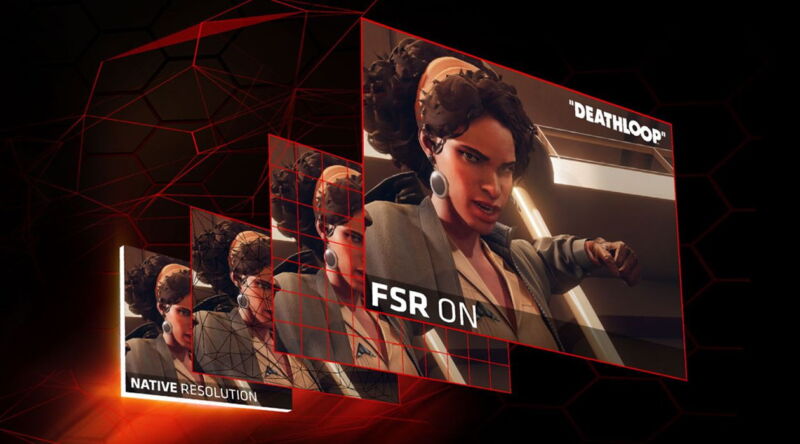
Out of all the battles between graphics card manufacturers, the fight over image upsampling and reconstruction is the most interesting to follow, mostly because more gamers can actually take advantage of the results. This week, that battle has become even hotter, thanks to AMD finally landing a considerable blow.
Despite only working on one game as of press time, AMD's new FidelityFX Super Resolution (FSR) feature finally passes the sniff test that its "1.0" version flunked last year. This week's updated "2.0" version works on a larger number of GPUs in the wild than Nvidia's comparable option, and it lets players get closer to good-enough pixel counts when running on 1440p or 4K panels. But the caveats in play leave us viewing the results as good news for older or mid-range GPUs rather than the solution to the supply issues everyone is facing.
A brief explainer on Nvidia DLSS and AMD FSR
Image upsampling, as delivered by the likes of Nvidia and AMD, can take a game with a smaller pixel resolution and intelligently blow it up to fill popular screen resolutions like 1080p, 1440p, and 4K. If these systems work as advertised, they'll produce something comparable to raw pixels—or sometimes look sharper since they also include an anti-aliasing pass to remove "jaggies" and other visual defects.
The rollout of Nvidia's deep learning super-sampling (DLSS) in 2018 came with asterisks, however; it required newer "RTX"-level GPUs, made only by Nvidia, and leaned on dedicated rendering cores. Nvidia's sales pitch at the time centered on machine learning. After running bazillions of 3D game-rendering scenarios, the company came up with a number of crisscrossing formulas to predict which pixels in your video games to draw next. The resulting formulations, run on RTX GPUs, could spit out remarkably accurate guesses in real time, making games look quite good without adding button-tap latency as a trade-off. Why should your game render the entirety of a 4K-resolution scene, Nvidia essentially asked, if our machine learning model can interpret something closer to 1080p and blow it up larger with incredibly high accuracy?
Nvidia's model also drew upon temporal information, which one of the most popular anti-aliasing solutions, temporal anti-aliasing (TAA), already does. When AMD finally showed up with its FSR system in 2021, however, its calculations didn't account for things like motion vectors and the likely direction of player movement. The initial results looked less like an intelligent upscaling system and more like a mix of pixel-doubling and unoptimized anti-aliasing (honestly, not much better than the "checkerboard" rendering seen in many PS4 Pro games).
That "FSR 1.0" model improved somewhat over the past year, enough to make it an occasionally recommended toggle to get weaker PCs to run compatible games more reliably, but the feature never aimed to be better than DLSS. Rather, it worked on far more PCs—and even on AMD's competitors, scaling down to as low as Nvidia's GTX 1000 and 1600 series. (That's great news for owners of the GTX 1060 since it's not at the "RTX" level that DLSS demands, and the card has consistently topped the Steam Hardware Survey charts.)
reader comments
44